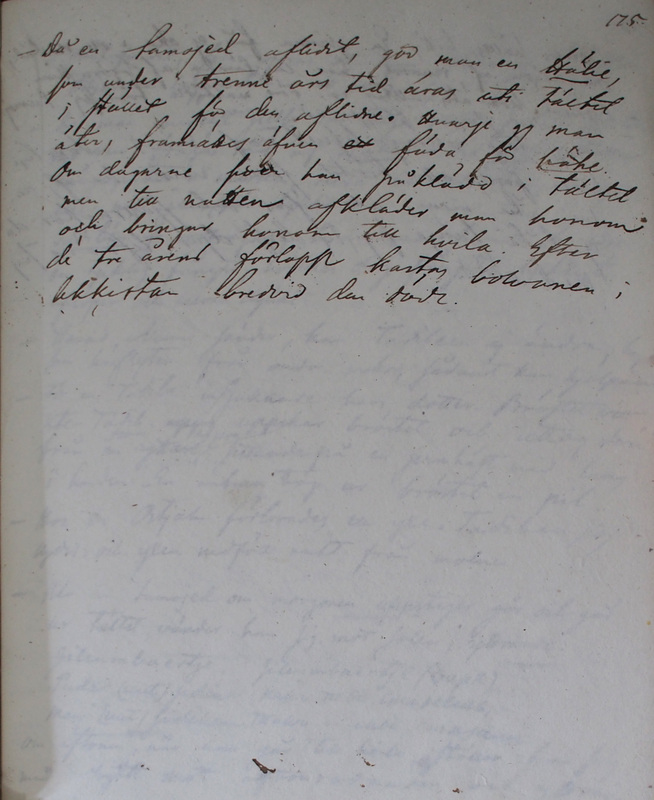Ethnographiska, historiska och statistiska anmärkningar. 175
Title
Ethnographiska, historiska och statistiska anmärkningar. 175
Description
|
Då en Samojed aflidt, gör man en
som under trenne års tid äras uti tältet Hähé,
A special term, TN сидяңг, сидряңг, or TN ңытарма, is known for these images. Here, TN хэхэ is used as a general category, whereas сидряңг can denote both the shadow soul that leaves the body as a human or non-human animal dies and the image made to communicate with the soul; ңытарма tends to denote only the latter. The idea of this anthropomorphic figure is to materialise the recently deceased so that they can live together with the family. They are dressed, fed, and talked to and kept in the sleeping space of the tent and after some years, they are moved to live with the other images in the TN сиʹ or TN хэхэʹ хан. There is regional and temporal variation, depending on who these images are made of and how long they are communicated with. (Lehtisalo 1924: 140–143; Chomič 1977) See also [Den döde] and [den döda].
i stället för den aflidne. Hvarje g[ån]g man äter, framsättes äfven ett föda för hähe. Om dagarne sitter han påklädd i tältet men till natten afkläder man honom och bringer honom till hvila. Efter de tre årens förlopp kastas bolvanen i likkistan bredvid den döde. |
When a Samoyed dies, one makes a Hähe who is honoured for three years outside the tent instead of the deceased. Every time they eat, they also make food for the hähe. During the day he sits dressed in the tent but at night they undress him and let him rest. After three years, the bolvan is thrown in the coffin next to the deceased. |

